|
|
| |
 |
Rat Pro Audio Sales Hours: Monday - Friday 9am to 5pm PST Most products ship within 1 business day! CALL Daniella at
888 545 8271 |
 |
Here is something I think may be useful for those of you that deal with live stage monitors and I think you will find quite surprising. As you may or may not know, different types of microphones have different polar patterns. A polar pattern is the term used to describe where the microphone is most and least sensitive to picking up sound. There are five common polar patterns and typically three of these are commonly used in for live sound applications.
Omni-directional - An omni mic pattern means the mic pics up sound from all angles at relatively the same level.
Cardioid - A cardioid mic pattern is most sensitive in front of the mic and the most effective rejection is directly behind the mic.
Super Cardioid - A super cardioid mic pattern is most sensitive in front of the mic and the most effective rejection is about 125 degrees off axis from the front of the mic.
Hyper Cardioid - A hyper cardioid mic pattern is most sensitive in front of the mic and the most effective rejection is about 110 degrees off axis from the front of the mic.
Figure 8 - A figure 8 mic pattern is most sensitive directly in front and directly behind the mic with rejection off the the sides.
For us live sound humans, we hopefully can disregard omni and figure 8 and focus on the other 3 patterns when dealing with vocal mics.
The red arrows represent maximum rejection for each mic type.
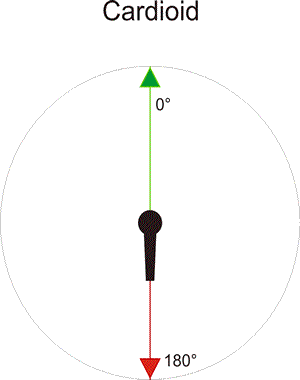
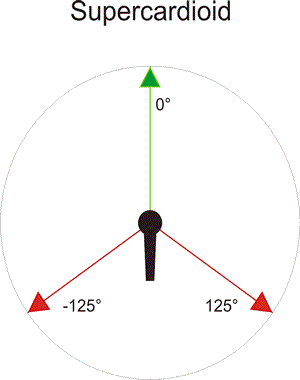
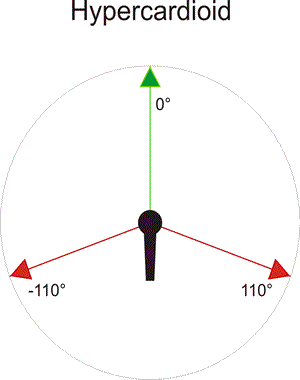
Ok, here is where it gets interesting. These polar patterns are 3 dimensional.
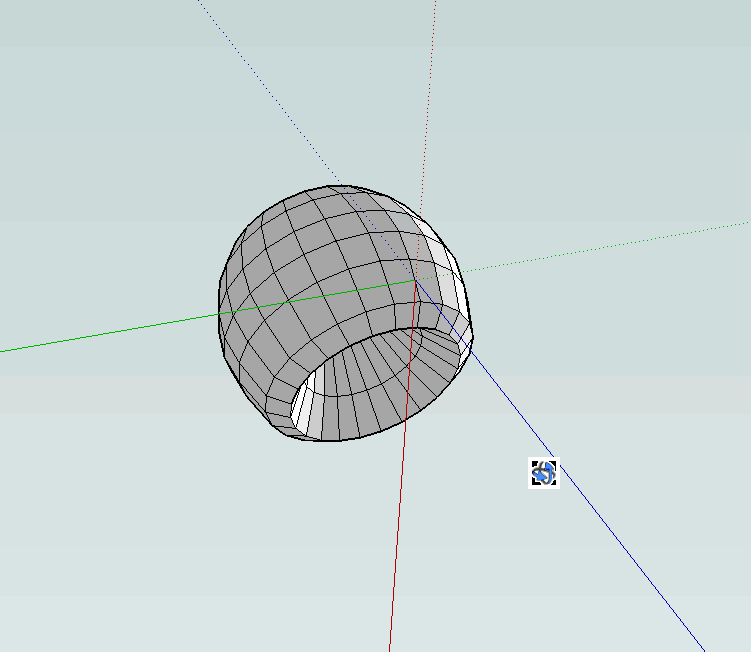
If you really start to think about it, the angle of the mic (tilt) is is much more important than most engineers realize. If you point a cardioid mic parallel to the ground it is impossible to get a floor wedge in it's rejection zone! Furthermore, to optimize wedges for the rejection zones of super and hyper cardioid mics you will find the wedges either need to be surprisingly far apart or your mic will need to be pointed at a fairly severe upward angle.
The rejection areas for super and hyper cardioid mics are quite non-intuitive. To demonstrate this, I will show you how to make some simple devices that allow you to easily optimize floor wedge positions for your vocal mic and see what is really going on.
#1 Look up the specs for the vocal mic you are using to find out it's pickup pattern. For example: Shure SM58's are cardioid, Shure Beta58's are super cardioid, Audix om7's are hyper cardioid.
#2 Go to the store and buy some cheap laser pointers. You will need one for the cardioid pattern, and two each for the super and hyper patterns respectively.
#3 Print out this PDF file Mic Polar Sheets http://www.ratsound.com/cblog/uploads/2009_12_02_polars.pdf
#4 Tape each of the three polar sheets to a separate piece of cardboard.
#5 Tape a laser to each of the red arrows pointing in the direction that the red arrow points.
Now select the polar that matches the pickup pattern for the vocal mic you are using, hold the laser polar sheet up to the mic and arrange the monitor wedges such that the lasers point as close as possible towards the horns in the monitor wedges. Remember, polars are 3D so you can rotate the laser sheets, just make sure to keep it lined up with the mic. Or you can attach a round rod like I did so its easy to rotate.
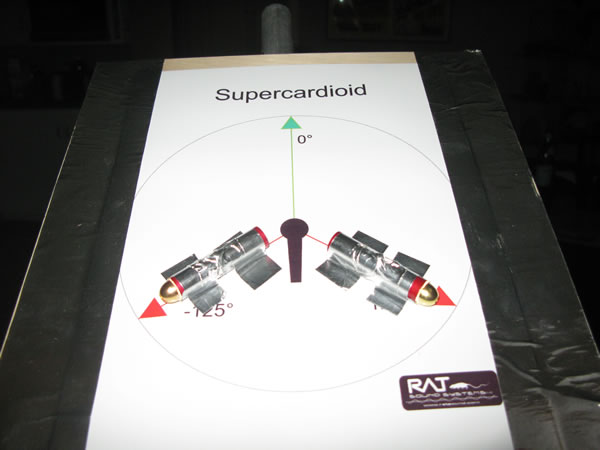
Here I have taken a few photos of a super cardioid pattern and rotated it.
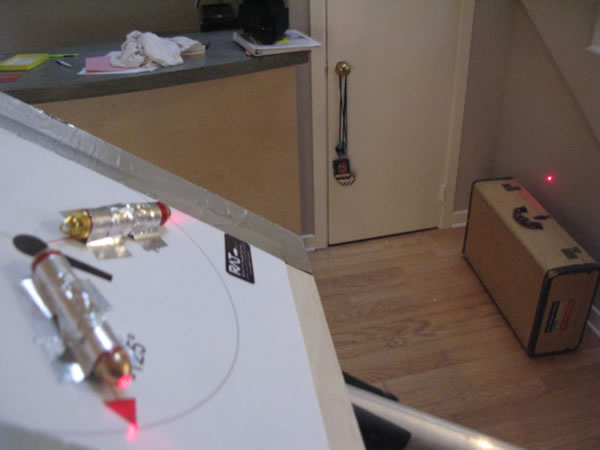
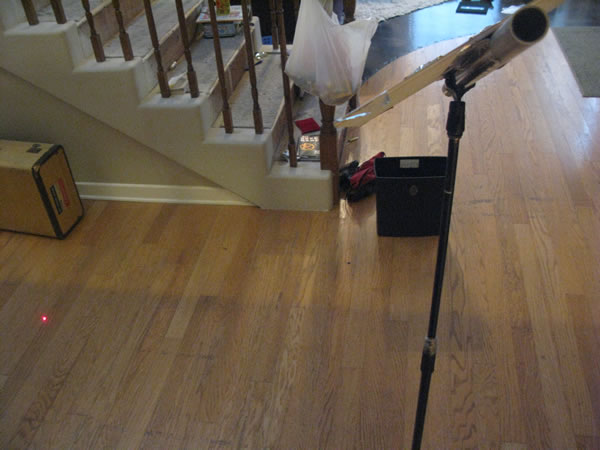
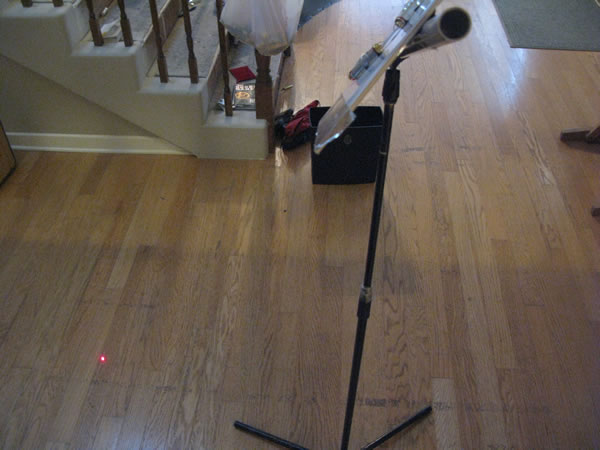
and as you keep going it passes almost straight down. These pics were taken with a typical slight up tilt mic angle. I think most of you will be quite surprised at where the optimum monitor placements occur relative to where typically engineers place them.
Keep in mind that this is most relevant for musicians with fixed mic positions. But hey, it can really help you reduce some stage feedback issues and help get some more gain out of the wedges.